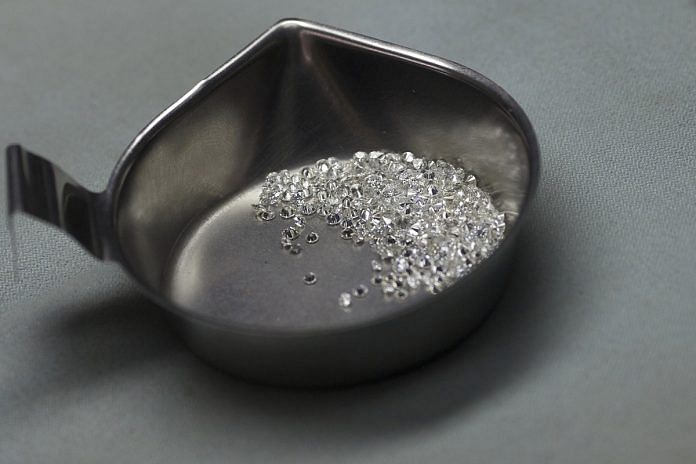New Delhi: A three-member team of scientists is trying to locate new diamond mines in India by studying how waves generated by earthquakes travel through the rocks of the Earth’s uppermost layers.
The researchers, from the Indian Institute of Science Education and Research (IISER) Pune and IIT (ISM) Dhanbad, are using seismic imaging techniques, similar to medical CT scans, to analyse how waves generated during earthquakes travel through the layers under the Earth’s surface.
Their work is based on their own research published in the Journal of Earth System Science last year. The research found that in regions of India’s diamond corridor — which includes Dharwar, Bastar and Singhbhum blocks in south-eastern India — these waves have a higher velocity than usual.
The team is now working on gathering more data to refine its model to identify regions with potential new diamond reserves.
“India had diamond mines in ancient times but now we are a diamond deficient country,” said Shyam S. Rai, a professor at IISER Pune. Rai is part of the team along with Gokul Saha and Shalivahan.
“Unlike resources like oil and coal, there is no definite mechanism through which diamonds can be explored,” Rai added. “If we can at least identify a 1,000 square kilometre area, then detailed investigations for finding the diamond mines can be undertaken.”
India was historically the world’s main supplier of diamonds until they were discovered in Brazil in the 1700s.
At present, however, legal diamond mining at an industrial scale is undertaken only at Panna, Madhya Pradesh.
Also read: India extracts its largest sediment core from latest Antarctic mission in Southern Ocean
Using data from earthquakes to detect diamonds
Rai said that while the earthquake method has been used in other countries, his team faced the challenge of accomplishing the same task with very little funds and even fewer monitoring stations.
The team has studied earthquake data from the entire south Asian region to map the elastic wave velocity through the lithosphere, the upper-most layer of the Earth’s surface consisting of the crust and the portion of the upper mantle.
Elastic waves are created when an external force causes a medium to temporarily deform and restore to its original shape. This results in a travelling wave that has varying velocity, amplitude and frequency depending on the medium through which it travels.
The waves generated in the earth’s crust during earthquakes are a classic example of such waves. “When there is highly rigid material (like kimberlites), an elastic wave passing through it would have extremely high velocity,” Rai explained. “So we set out to look for a possible correlation between the elastic wave velocity and the occurrence of diamonds.”
Kimberlites are rocks through which diamonds, which form over 100 km below the Earth’s mantle, find their way up to the surface.
“When we did this imaging, we found that the region that is essentially the diamond corridor of India has a significantly higher elastic wave velocity than what is expected,” Rai added.
Researchers used data of 20 years
The researchers used datasets dating back 20 years; this represents data from over 30,000 earthquakes in South Asia of 5 or above on the Richter scale.
Rai said that the research was meant to establish whether or not this method would work. With their mathematical tools successfully established, the team will now deploy their own instruments in the diamond corridor area to get better quality data.
“We are also talking to the Ministry of Earth Sciences to access their datasets,” he said.
With better quality data, the researchers say they can create a potential diamond map of the resolution of 25 square kilometres. This is much more precise than what diamond companies would require, Rai said.
Even without any additional grants, the team is confident of creating such a map within a year.
Also read: What is Modi govt’s ‘quantum mission’ that has been allocated Rs 8,000 cr in Budget 2020



